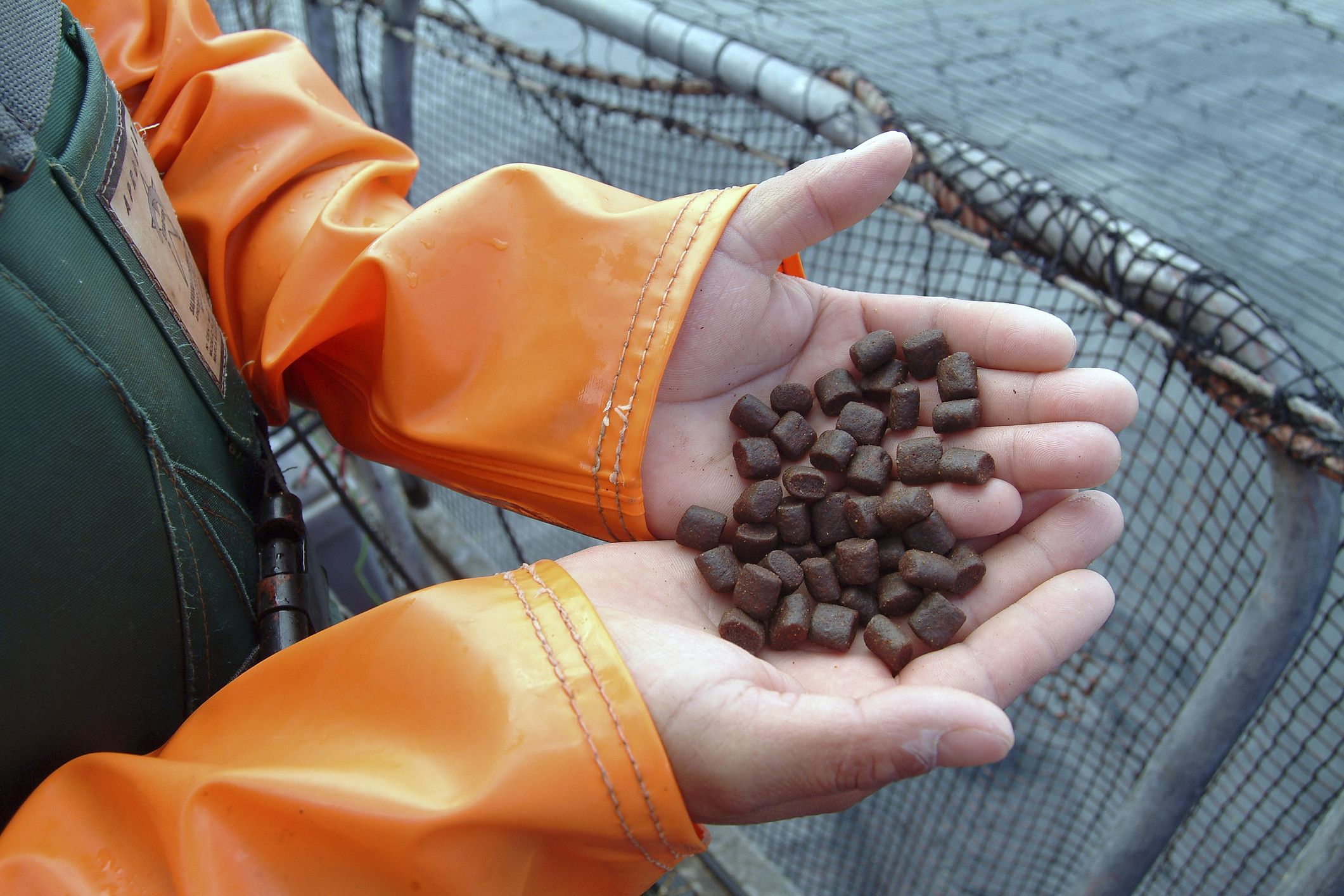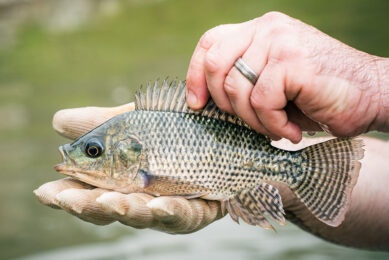Fish feed: Start all over again?

We still don’t know the requirement levels for some minerals and vitamins for farmed fish species. Do we have to start all over again?
The changing requirement levels are mainly due to the fact that fish diets are changing rapidly from being marine based to plant based. In 1990, a typical salmon diet had no plant based oil or protein in it. This changed after 2000, when slowly more marine based ingredients were partially replaced by plant based ingredients. As of 2010, the percentage of plant based protein overtook the inclusion rate of fish meal (Figure 1). Experts even say that total replacement of the marine ingredients is possible, without compromising fish health and performance.
How much selenium?
The shift to more plant based ingredients brings nutritional challenges. Fish meal is known to have a high level of selenium, an essential element in animal nutrition. When fish meal is left out or critically reduced in the feed matrix, supplementation of selenium (organic or inorganic) is needed. Supplementation can be done for 2 reasons. To restore or maintain selenium levels in fillets of farmed fish as a selenium source for consumers. And/or to cover animal nutrient requirements for a robust farmed fish. Research at the Institute of Marine Research in Bergen, Norway tested different levels of both an inorganic form (selenite) and an organic form (selenomethionine). They concluded that for the inorganic form, a safe dietary dose is 0.01-0.02 mg total selenium / kg BW / day. For the organic form this is 0.03 mg. These levels are based on a diet with low fish meal (10%) with background levels of 0.45 mg / kg. But that doesn’t mean we can raise the selenium levels just like that, simply because it benefits performance. Excess selenium is know to be toxic at low concentrations a narrow window exists between the requirement and the toxicity. The upper limits of micro-ingredients in animal feed are therefore based on environmental impact, animal health and food safety. Higher inclusion levels may be good for growth, food safety may be compromised.
Ingredient interactions
If we look at iron for example, research showed that when fish meal inclusion levels (%) are reduced, the iron levels in the total diet also reduce. The requirement for salmon is 150ppm iron. The EU maximum levels are 750ppm. In a diet with 50% fish meal, you come to approximately 100ppm. The rest can thus be supplemented (up to 750ppm according to legislation). In a diet with 10% fish meal inclusion, you have to supplement a lot to even come to the requirement level. Also vitamin B can be an issue for salmon, as shown by research from 2016. The authors recommend increased dietary levels are required in diets high in plant based ingredients. At the same time, still not a lot of knowledge has been gained about ingredient interactions, although some studies have been done to see whether high levels of essential amino acids (Lys, Arg, Met, Thr), in combination with high levels of minerals (Zn, Fe, Se) or vitamins (vitamin C, E and astaxanthin). Some interactions benefited salmon performance, some not.
Re-evaluating requirements
So, we need more information! The EU project Arraina (Advanced research initiatives for nutrition and aquaculture), which ran from 2012 to 2016, looked at how much micronutrients different species of fish need now that the composition of the feed has changed. The scientists from the project are now working their way through the list of vitamins and minerals, and have so far covered vitamin C, vitamin E, 8 different B vitamins and several minerals. But diets will constantly change and new ingredients, such as blue mussel or animal by-products when legislation allows, are waiting to be included in fish diets. How will these ingredients change the diet composition? And what about other large species we farm, such as rainbow trout and gilthead seabream and the European seabrass. And how will their diets look like in the future? Being a fish nutritionist today must be difficult and exciting at the same time. It looks like requirements and inclusion levels for minerals and vitamins is overtaken by the rapid developments in the aquaculture industry. What is happening in practice is moving faster than legislation, as the current inclusion rates are often based on trials that do not mimic real life situations (and often based on rainbow trout) and are based on old studies (from the 1980s). The Arraina project has come to a close. Luckily, still more research is being done since to look at the changing nutrient requirements for farmed fish species. Because feed ingredients will change all the time, so will diet formulation.











